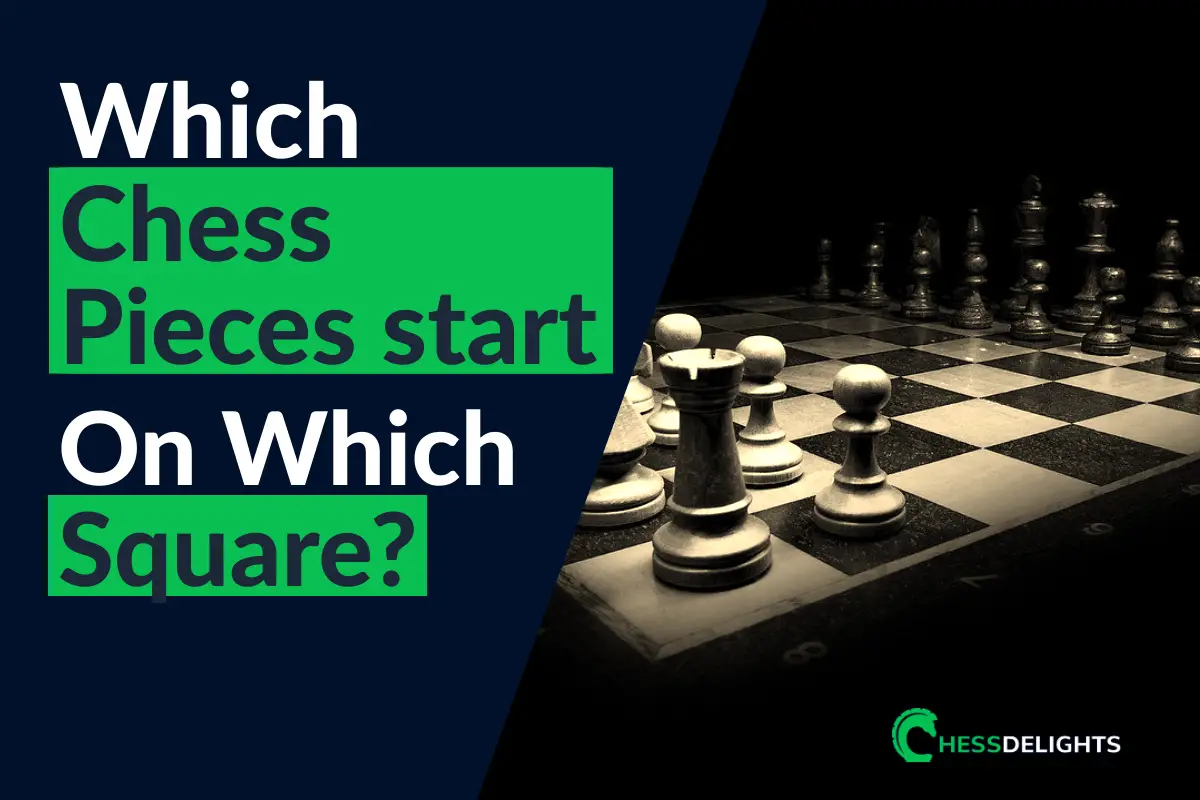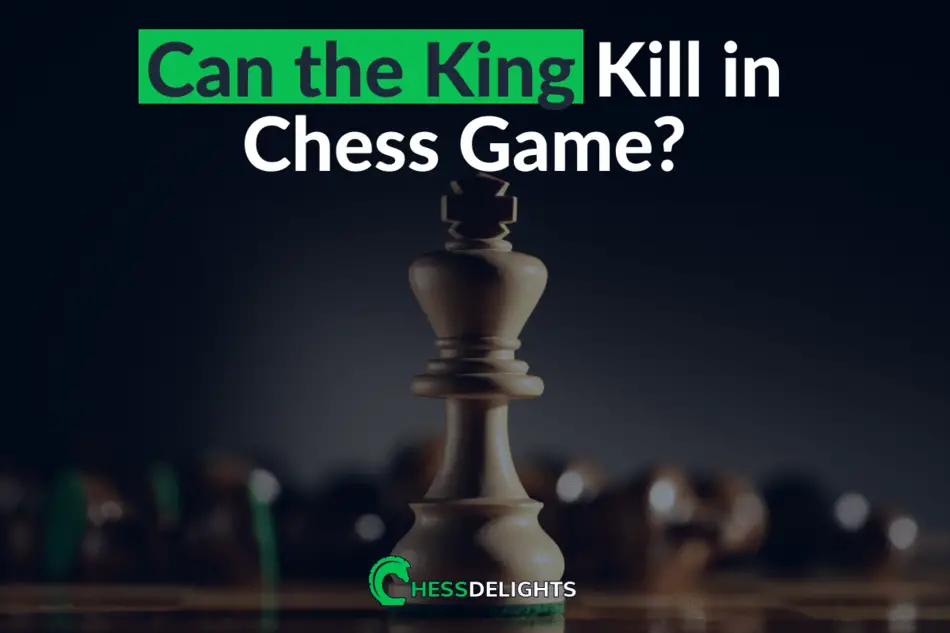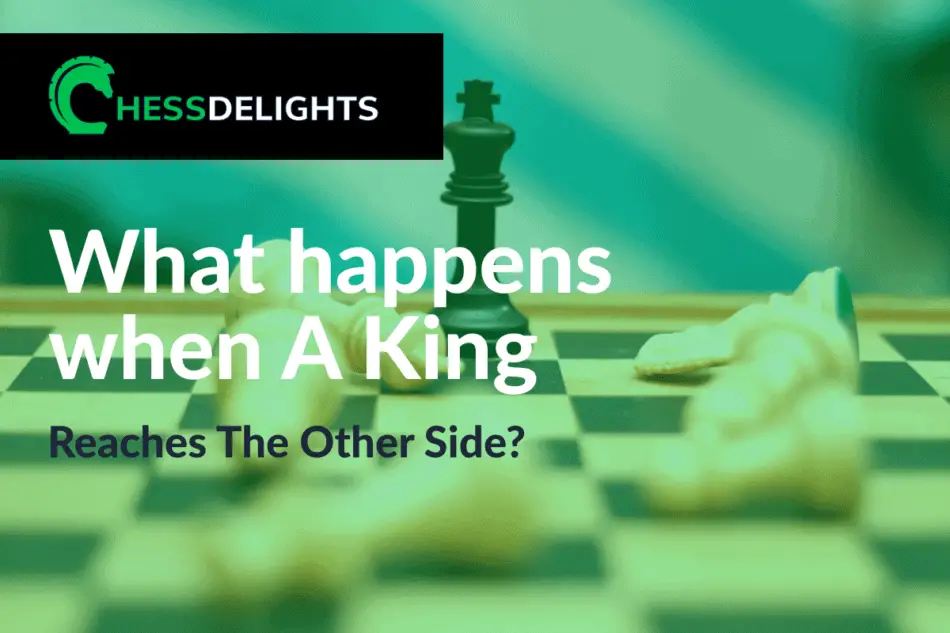To completely understand what happens when a pawn reaches the other side of the board, you need to be aware of three specific pawn moves or pawn rules in chess. I've been studying chess rules since I was young, and the rules I'll share with you here may be useful when you play offline games.
The first thing you should know is that the pawns can only capture diagonally. Easy, right?
Second is the en passant; it is a pawn capture and one of the pawn's special moves.
Let me explain…
After the enemy pawn has advanced two squares from its starting position, your pawn can immediately capture that pawn on the same rank and on the adjacent file. Was that simple?
The third and most important thing you need to know is that pawns can’t move backward…
They only move forward…
That leads us to what happens if your pawn keeps moving forward and it reaches the other side of the board.
Table of Contents
[snippet]
Chess Pawns Moving To The Other Side Of The Board
When a pawn reaches the other side, you can turn it into a queen, even if you already have a queen on the board, referred to as queening or pawn promotion. You can also turn it into any other chess piece except for king. You can have as many pieces of a certain type as you want with pawn promotions.
[/snippet]
Recommended reading: If you want to learn all the important pawn rules and lessons, check out our chess pawn rules guide.
Pawn Promotion Explained
Beginner players may ask if they can only promote a piece that has already been captured. The quick answer is no; you are not limited to promoting your piece to only captured pieces.
So, understanding pawn promotion is crucial in the game of chess…
Pawn promotion occurs when a pawn reaches the opposite end of the board and can be promoted to a more powerful piece, such as a queen, rook, bishop, or knight.
This strategic move can significantly change the dynamics of the game…
Because it provides players with a stronger attacking or defensive position.
Knowing when and how to promote a pawn requires careful calculation and foresight, as it can greatly impact the outcome of the game.
Main Rules Of Pawn Promotion
Pawn promotion can lead to strategic advantages and is an important aspect of chess endgames.
Here are the main rules to keep in mind:
- When a pawn reaches the other side of the chessboard (the 8th rank for White or the 1st rank for Black), it can be promoted to a more powerful piece (queen, rook, bishop, or knight).
- The player who has the pawn can choose which piece to promote it to.
- The promoted piece replaces the pawn on the same square.
- Pawn promotion can occur during a player’s turn as part of their move.
- The promotion can be to any piece, including one that has been captured earlier in the game.
Two Main Types of Pawn Promotion
Promoting a pawn to a queen is the most common choice when a pawn reaches the other side because of its versatility and power on the board.
However, there are two main types of pawn promotion that you need to know:
- Queening Promotion: This type refers to promoting a pawn to a queen. It’s because its the most powerful chess piece on the board.
- Underpromotion: This type refers to promoting a pawn as a rook, bishop, or knight instead of a queen. This is often used strategically to create unique tactical opportunities or prevent stalemate situations.
Recommended reading: Interested in learning about the queen? Read our article about why the queen is the most powerful chess piece.
Pawn Promotion Strategies (What Piece To Promote Your Pawn?)
There are several strategies for promoting pawns in chess.
Here are some of the best ways to promote pawns using pawn promotion strategies:
Queen Promotion: Promoting a pawn to a queen is the most common and often the most powerful choice. It gives you a powerful piece that can control the board and attack the opponent's pieces effectively.
Knight Promotion: In certain situations, promoting a pawn to a knight can be advantageous. Knights have unique movement patterns, and promoting to a knight can create unexpected threats or fork opportunities.
Rook Promotion: Promoting to a rook can be useful when you need additional rooks to support your attack or control open files. Rooks are great for controlling the board and can contribute to a strong endgame.
Bishop Promotion: Promoting to a bishop can be beneficial when you want to strengthen your diagonal control or create potential mating threats. Bishops can be particularly effective in open positions.
Delaying promotion: In some cases, it may be strategic to delay pawn promotion to maintain flexibility and avoid potential drawbacks. This strategy is often employed in complex endgames or situations where precise timing is crucial.
Always keep in mind that the choice of promotion depends on the position, the opponent's pieces, and your overall strategy. Evaluating the position carefully is crucial before deciding on the best pawn promotion strategy.
Pawn Promotion Strategies By Sacrifice
Promotion strategies in chess involve sacrificing pieces, which is a powerful and effective tactic to gain tempo, open up lines, initiate attacks, and create tactical complications.
Here are some common promotion strategies with sacrifice:
- Sacrifice for a passed pawn: Sacrificing a piece to create a passed pawn can be a powerful promotion strategy. By sacrificing a piece, you can create an unstoppable pawn that can promote to a queen or another powerful piece.
- Sacrifice for an attack: Sacrificing a piece to initiate a strong attack on the opponent's king can lead to a successful promotion. By sacrificing a piece, you can open up lines of attack and create threats that force your opponent to defend, giving you the opportunity to promote one of your pawns.
- Sacrifice for material imbalance: Sometimes sacrificing a piece for a favorable material imbalance can lead to a winning promotion. By sacrificing a piece, you can disrupt your opponent's coordination and create imbalances that give you a better chance of promoting your pawns.
- Sacrifice for positional advantage: Sacrificing a piece to gain a positional advantage can also be a valid promotion strategy. By sacrificing a piece, you can gain control over key squares or weaken your opponent's position, setting the stage for a successful promotion.
It is important to note that pawn sacrifices should be carefully evaluated and calculated, considering the current position, piece activity, potential threats, and overall strategic goals.
Not all pawn sacrifices are good…
But when executed with precision and proper evaluation, they can lead to significant advantages in the game.
Frequently Asked Questions
What Happens When A Pawn Reaches The Other Side But You Don’t Have An Extra Piece To Promote Your Pawn?
Some players lose because they are confused about what to do if no chess pieces are available to promote their pawn.
If you're playing with a clock, the first thing you should do is stop it and call your arbiter's attention.
If the first option is not available…
Then you should make sure that you get your opponent's attention and inform them of the piece with which you are promoting your pawn.
If you're playing informal games or offline games at home and don't have extra pieces, a stand-in piece (coin, token, or other agreed-upon objects) can be utilized.
If the player already has a queen on the board, a previously captured upside-down or inverted rook can be used as the player's second queen.
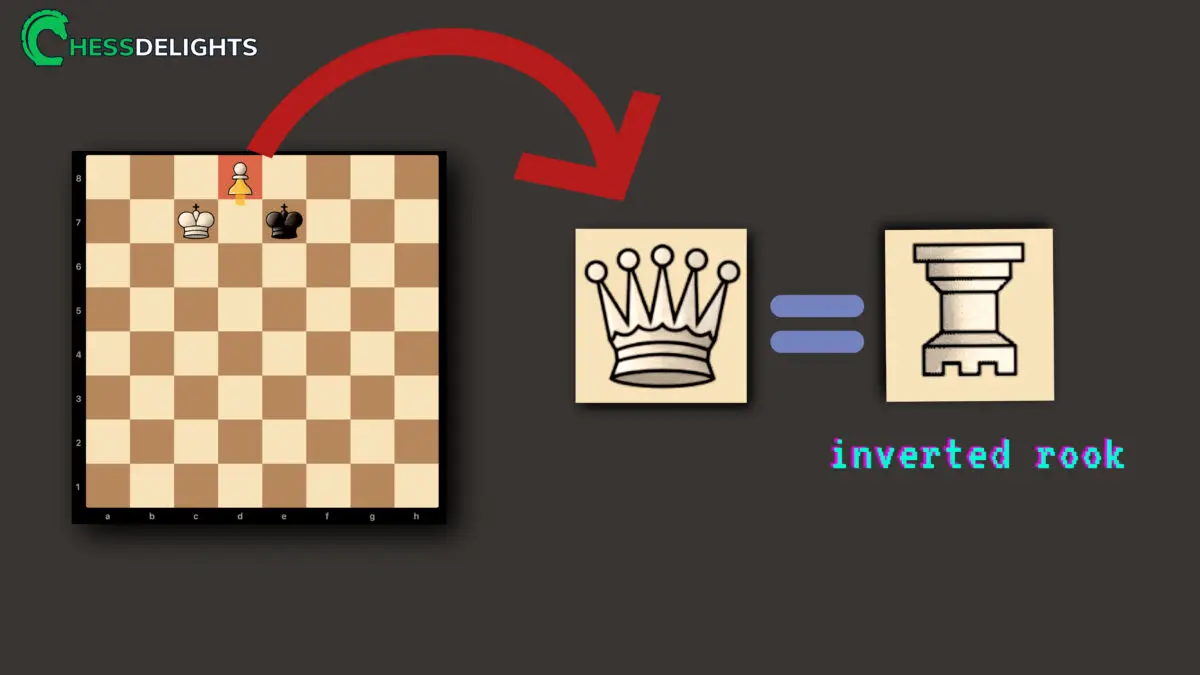
When A Pawn Is Promoted Where Does It Go?
When you get a second queen via queening promotion, the pawn is then removed from the board.
It’s no longer part of the game after the promotion…
The same goes with promoting your pawn with a bishop, rook, or knight, which in technical chess terms is called underpromotion.
When To Underpromote Your Pawn?
The best time to underpromote your pawns in chess is when promoting them to a queen would result in a stalemate or a disadvantageous position.
Underpromotion to a knight, bishop, or rook can sometimes offer tactical advantages and create unexpected threats on the board. It is a strategic decision that depends on the specific position and the goals you have in mind.
A match between Aron Reshko and Oleg Kaminsky in the 1972 Leningrad Championships demonstrated the use of underpromotion of a pawn.
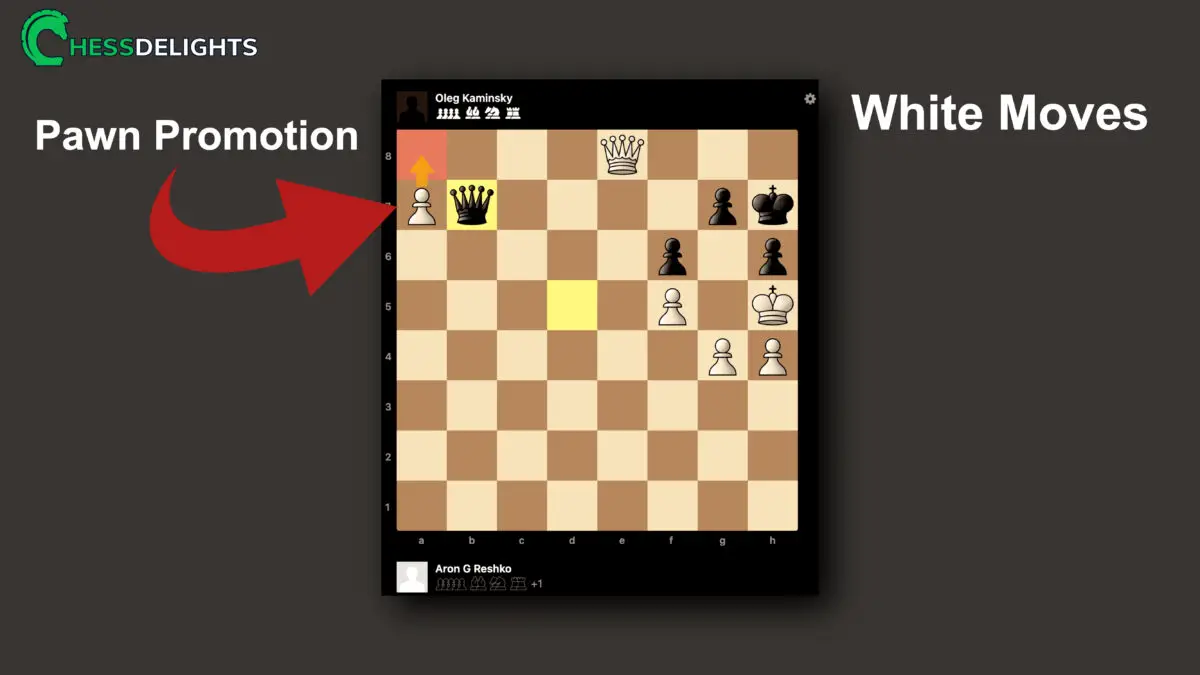
If you're not familiar with this game, try to solve it and understand the strategy behind it.
Another example…
In 2009 4th FIDE (Federation Internationale des Echecs, International Federation of Chess) Grand Prix match between Vladimir Akopian and Sergey Karjakin.

What's the best move for the above? Try to solve it!
Can You Promote A Pawn Without Moving It To The Promoting Square?
Replacing your Pawn one square away, or not moving it entirely to the end of the board, is an illegal move. You have to move the chess pawn to the last square before you attempt to exchange it via promotion.
There have been arbiters that have declared these moves illegal in tournaments…
So make sure you, your opponent, and the arbiter come to an understanding about the rules of promotion before the game starts.
It's also a best practice to make sure you stop the clock (if you are using one) to promote a piece.
What Pawns Are More Likely To Be Promoted?
There was a study conducted in Ernest Rubin, American University and the University of District Columbia regarding the Queening in Master Chess Tournaments.
This was a study of 89 pawn promotions witnessed in a total of 70 games over fourteen chess competitions between 1867 and 1970. It turns out that the King Rook Pawns and Queen Rook Pawns were the most likely to be promoted, that is 31 pawn promotions out of 89 or better than 34 percent. The next likely was the Knight Pawns with 23 pawn promotions at 25 percent. Finally, the King Pawns and King Bishop Pawns were the least likely with 16 pawn promotions, at about 18 percent.

Useful External Resource: If you want to read more about this case study, check out the document here.
Can You Promote Pawns To Bishops Controlling The Same Color Even If You Already Have One?
When a pawn reaches the other side of the board, you have the ability to choose whatever chess piece you want. That means, you can have two bishops that controls the same color, for example you can have two bishops that controls the light square diagonals or two bishops that controls the dark square diagonals.
Again, if you think it's totally necessary to have two bishops controlling the same color of diagonals, then go ahead.
It will always come down to strategies and tactics.
Hope this helps! Send me a message or comment if you have any more to add to this guide.
Enjoy Playing And Learning Chess!
Essential Chess Resources: Let's take your learning to the next level by checking out our recommended chess resources.




